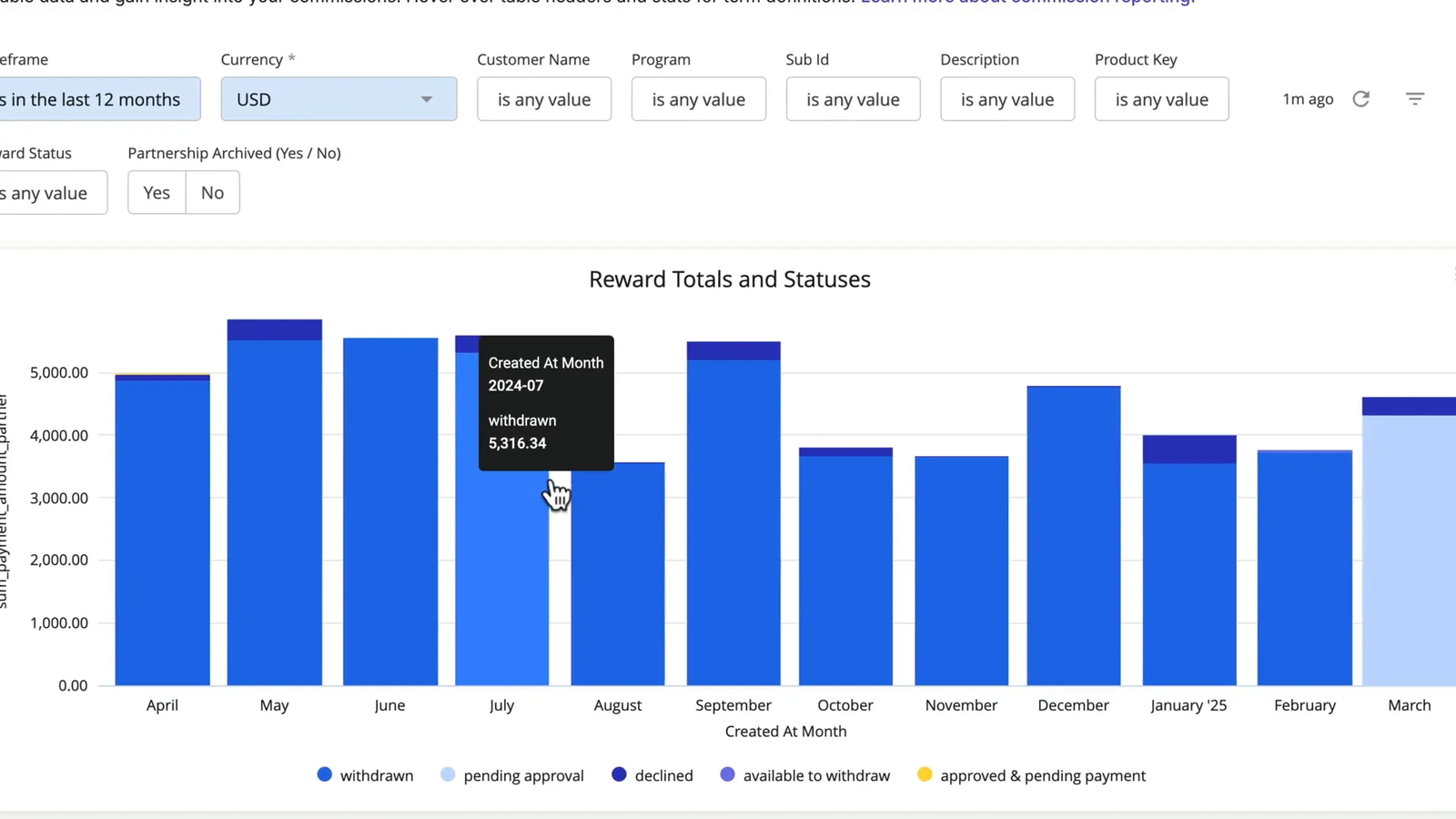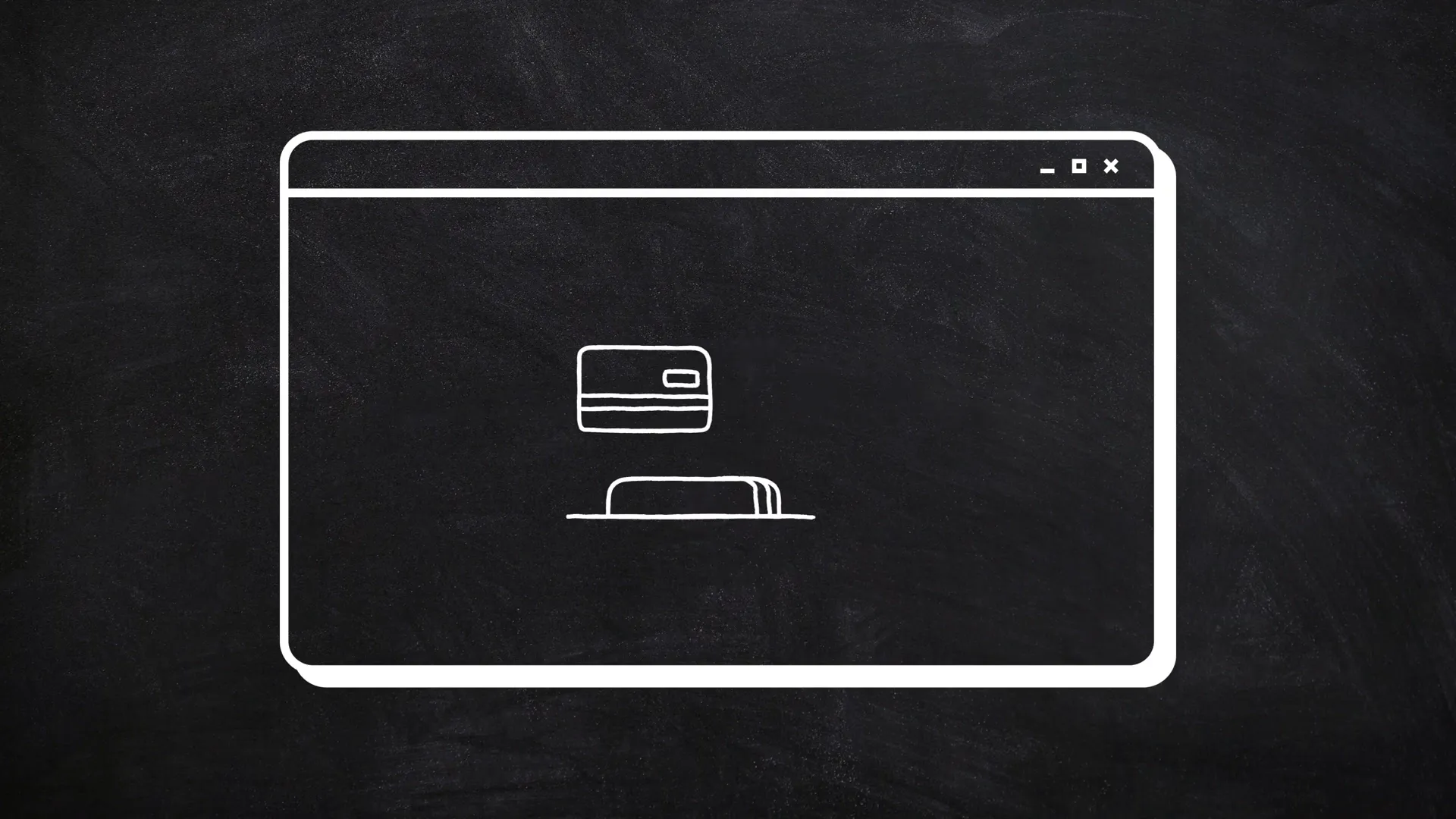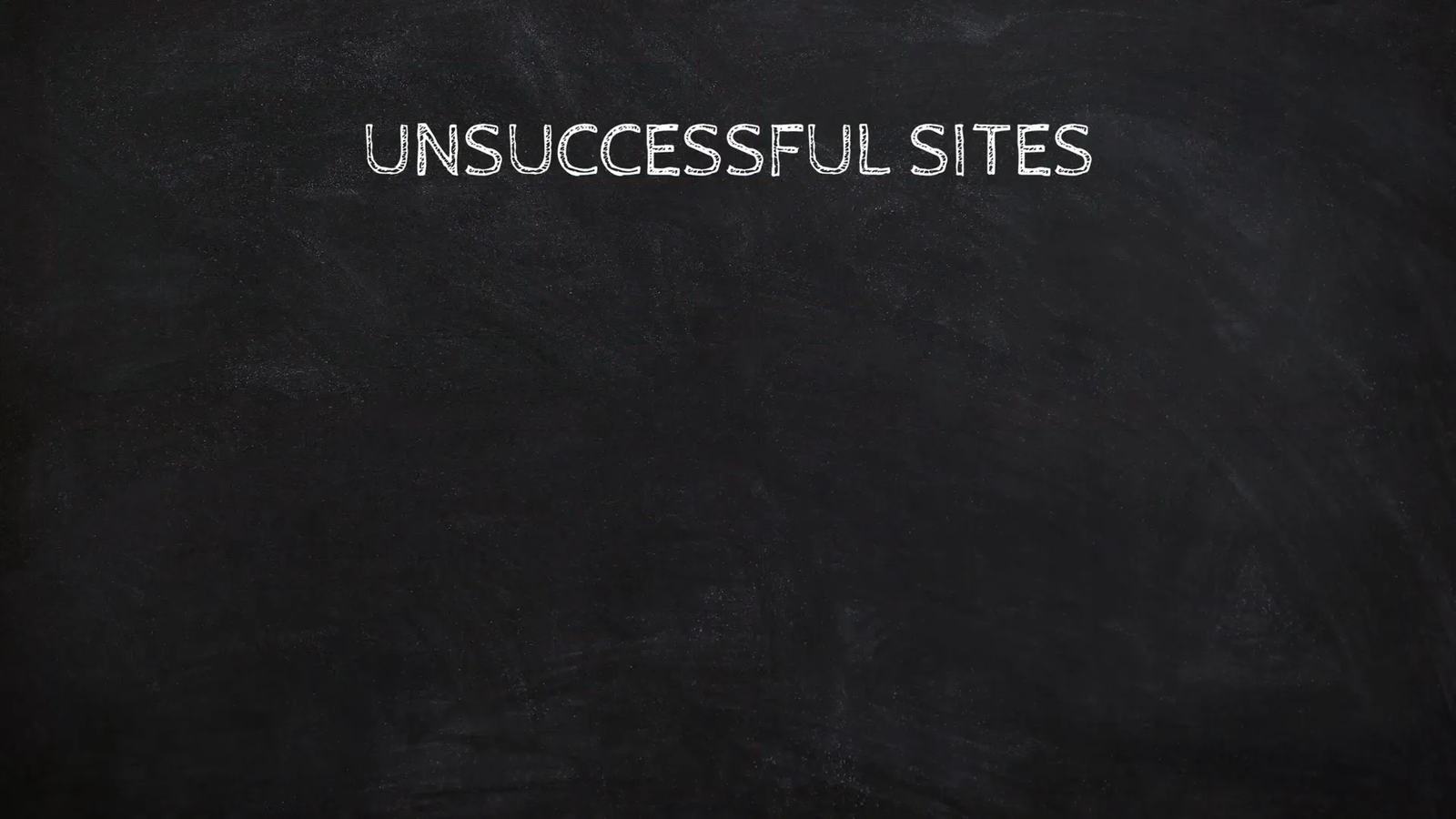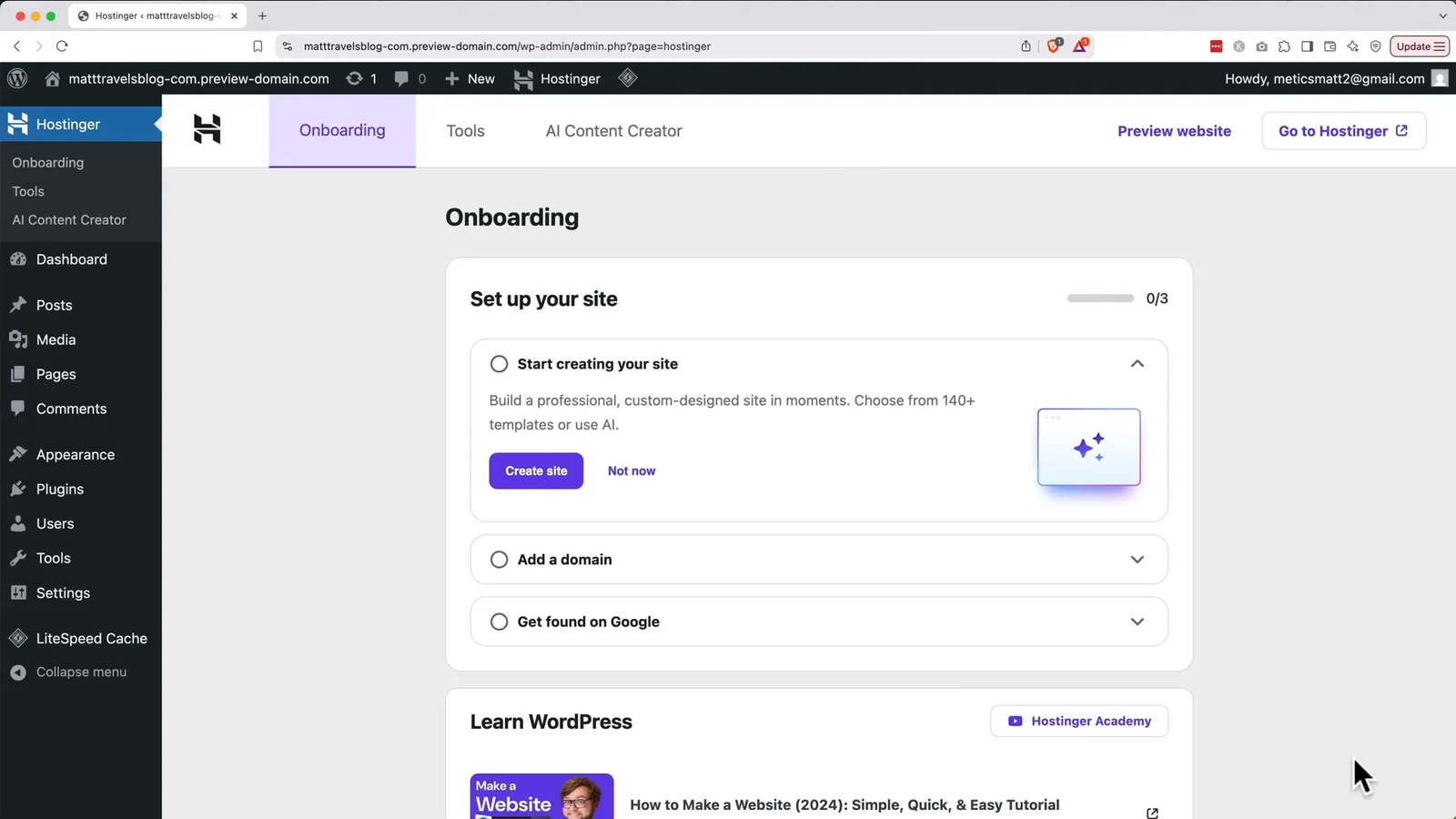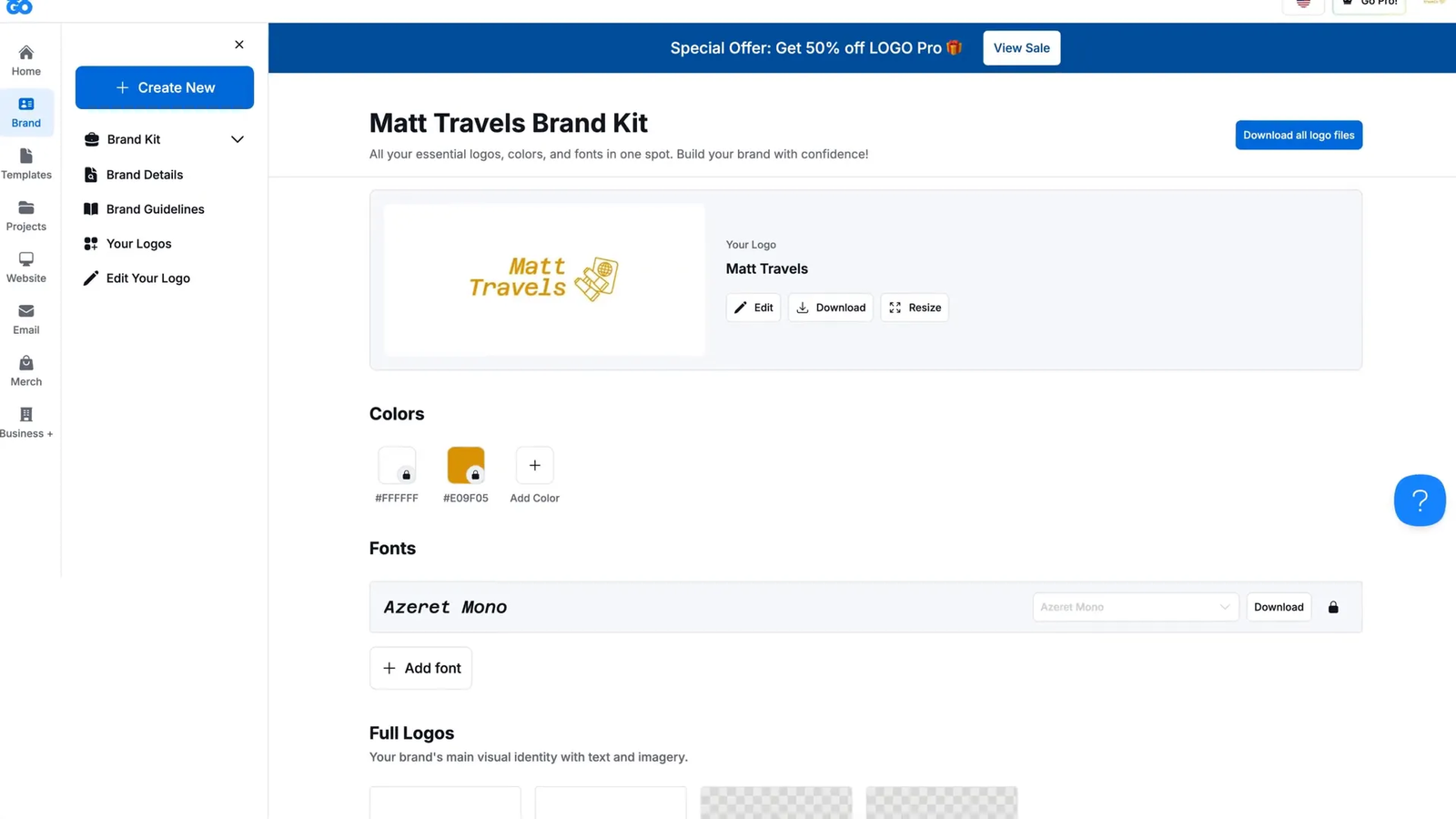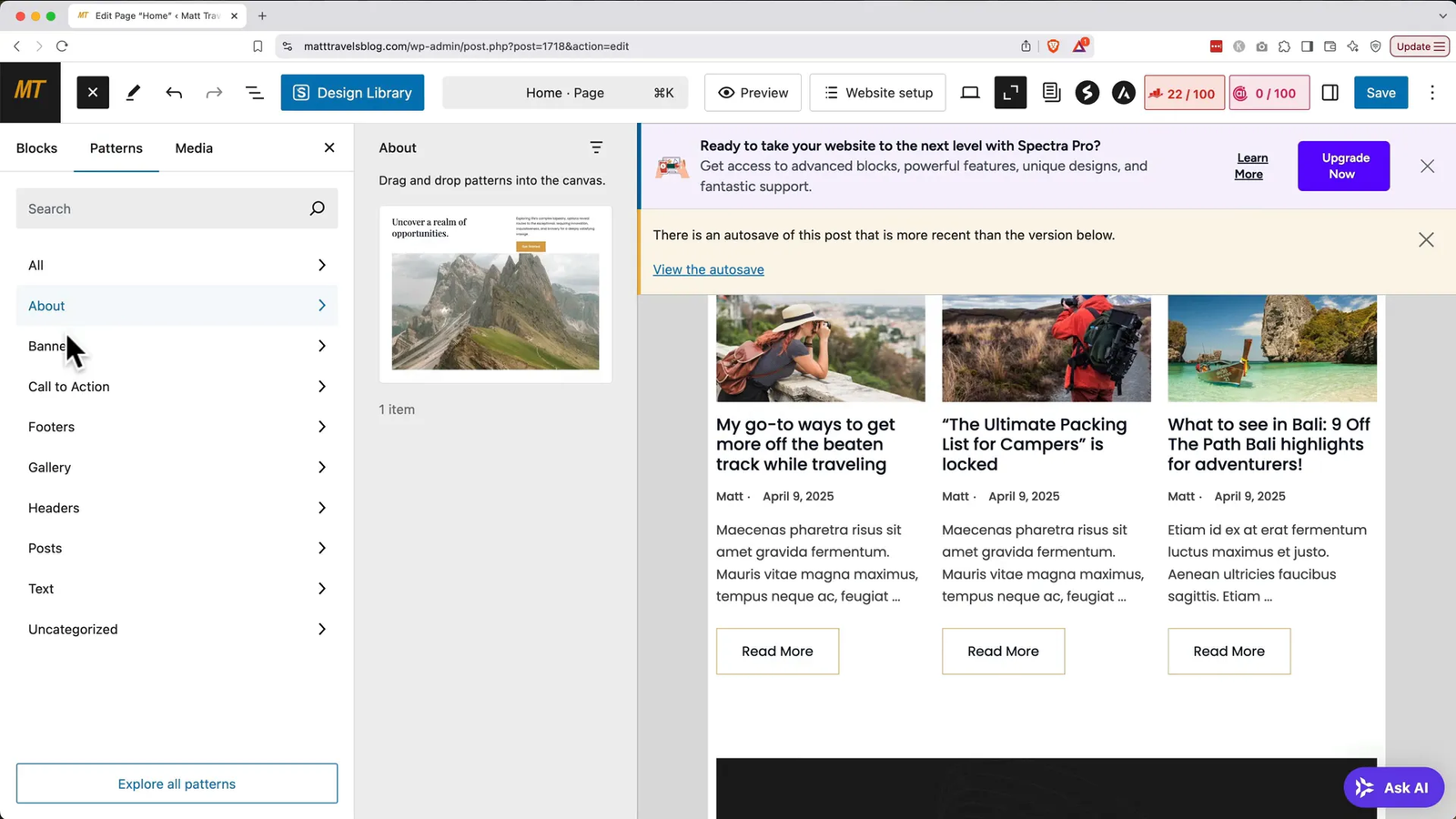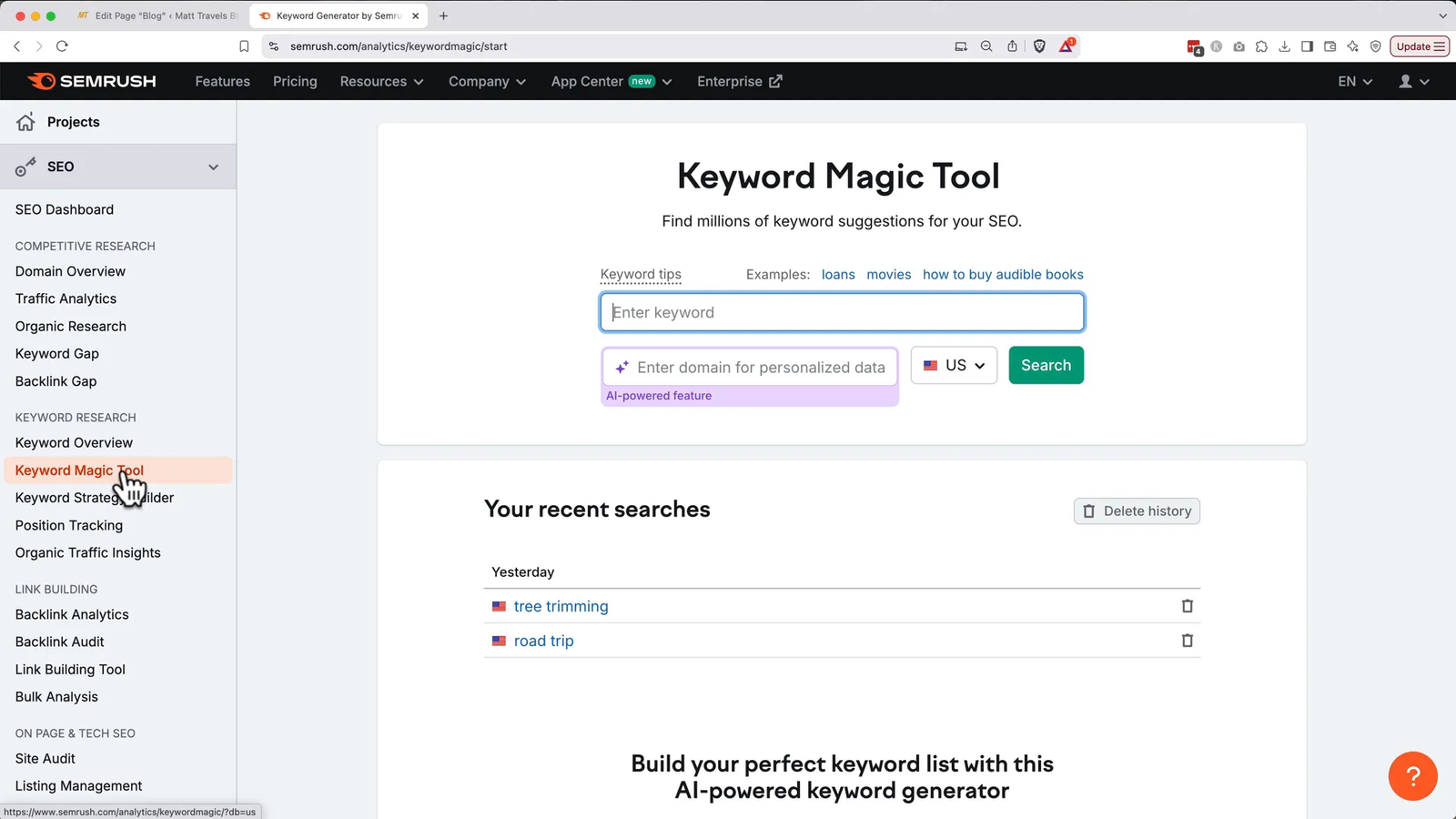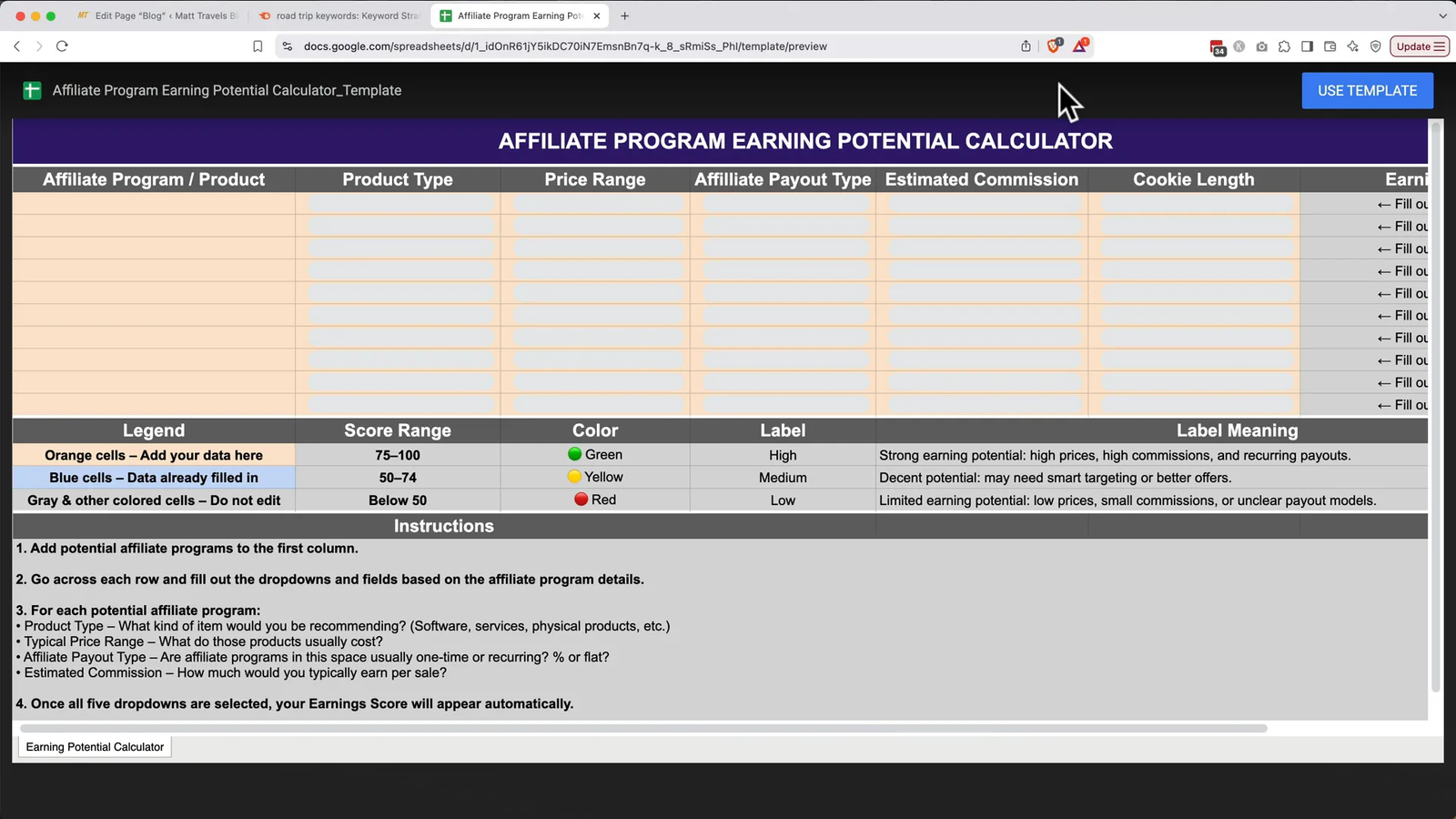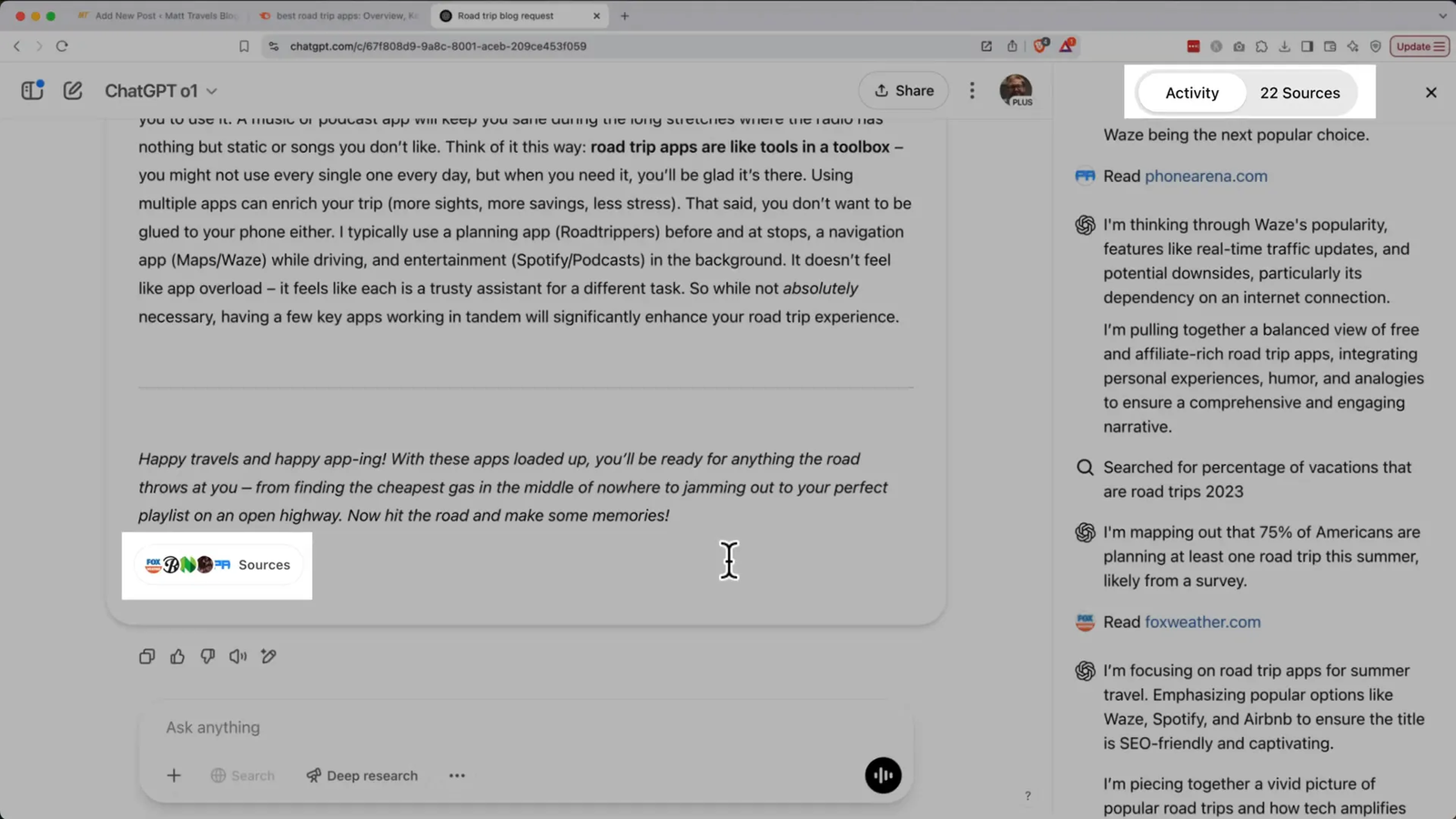Starting an affiliate marketing website is one of the most beginner-friendly ways to earn money online in 2025. You don’t need to create your own product, manage stock, or deal with customer support. All you need is a good niche, a simple website, and the right content.
This guide walks you through every step—from choosing a niche and building your site to getting traffic and making commissions. Whether you’re brand new or restarting after a failed attempt, this tutorial shows a real path to success.
This comprehensive tutorial is inspired by insights from Metics Media’s detailed guide on building affiliate websites using WordPress and Hostinger. It covers everything from understanding how top affiliate sites make millions, choosing a profitable niche, setting up your website, optimizing it for Google, creating SEO-friendly content, and scaling your website for consistent income.
By the end of this guide, you’ll have a fully functional affiliate marketing website ready to generate income, even if you have no prior experience.
Step 1: Understanding How Top Affiliate Websites Make Money 💰
Before diving into building your website, it’s crucial to understand the affiliate marketing model and why some sites make millions while others struggle to get traffic.
What is Affiliate Marketing?
Affiliate marketing is a method of earning money online by recommending products or services. You don’t handle stock or customer support — instead, you share a unique affiliate link. When someone clicks your link and makes a purchase, you earn a commission.
Leading websites like NerdWallet and PCPartPicker leverage this model extensively by helping users compare financial products or computer parts, respectively, and earn commissions when users buy through their links.
Examples of Successful Affiliate Sites
- NerdWallet: A personal finance site that earned over $687 million in 2024 by providing tools like calculators and quizzes that help users choose credit cards or loans. They combine transparency with deep research and SEO-focused content aimed at buyers.
- Healthline: A trusted health website that reviews supplements, wellness equipment, and fitness products. Their content is medically reviewed, building trust and authority, and their affiliate links are subtly integrated.
- Dog Food Advisor: A niche site focused solely on dog food reviews. It ranks for high-intent keywords like “best dog food for senior dogs” and uses email marketing to build long-term trust beyond search traffic.
- PCPartPicker: A tool-based affiliate site helping users build custom PCs by comparing prices and compatibility. It solves real problems, earning user trust before sending them to affiliate partners.
What unites these successful sites is their focus on a specific niche with strong purchase intent, delivering real value, building trust before asking for clicks, and publishing well-structured, SEO-optimized content that continuously attracts visitors and conversions over time.
❌ Common Mistakes of Unsuccessful Affiliate Sites
On the other hand, many affiliate websites fail because they:
-
Publish generic or low-effort content
Thin articles copied from other sites or written without depth fail to provide unique value, and often get ignored by both Google and readers. -
Skip SEO basics
Many beginners ignore essential SEO practices like optimizing titles, using proper headings, compressing images, and creating clean URLs. As a result, their posts don’t rank well in search engines. -
Try to sell too quickly
Pushing affiliate links without first educating or helping the reader comes off as spammy. Successful sites build trust before introducing affiliate recommendations. -
Target overly broad or unfocused niches
Trying to cover everything from fitness to tech on one site spreads your efforts too thin. It’s better to go deep in a niche than wide with no clear focus. -
Neglect user experience (UX)
Slow-loading pages, annoying popups, and poor mobile design can drive visitors away. A cluttered or confusing layout reduces engagement and trust. -
Ignore keyword intent
Writing blog posts on topics with no purchase intent — like “what is protein” instead of “best protein powder for beginners” — results in traffic that doesn’t convert. -
Lack of content structure
Walls of text with no subheadings, images, or formatting make content unreadable. Good formatting increases time-on-page and improves ranking. -
No legal compliance
Not disclosing affiliate links properly can lead to penalties or loss of trust. Legal pages like disclaimers, privacy policies, and disclosures are essential. -
Fail to track and optimize
Many affiliate site owners never review their analytics. Without tracking which pages convert best, it’s impossible to double down on what’s working. -
Give up too early
Affiliate marketing takes time — often several months — to gain traction. Many quit before their site starts ranking or converting.
Step 2: Choosing Your Profitable Niche 🎯
Choosing the right niche is the foundation of your affiliate marketing success. Most beginners make the mistake of picking niches that are either too competitive, too broad, or have little buyer intent.
What Makes a Niche Profitable?
A profitable niche usually meets three main criteria:
- Buyer Intent: Your content should target people actively looking to buy. For example, searches like “best beginner camera for YouTube” or “quiet portable fan for small rooms” indicate strong commercial intent.
- Profitability: Some products pay higher commissions than others. Digital products like software often offer 20% to 50% recurring commissions, while physical products typically pay 3% to 15% one-time commissions. Both can work, but it’s important to consider commission rates.
- Sufficient Search Volume: You don’t need millions of visitors, but there should be a steady interest in your niche to generate traffic and sales.
Types of Affiliate Niches with Examples
- Digital Products: For example, video editing for beginners. You can promote editing software, thumbnail tools, or online courses. Sites like TechRadar provide detailed guides comparing the best beginner editing tools.
- Physical Products: Such as camping gear for solo hikers. Reviews on foldable chairs, compact stoves, and sleeping pads can attract buyers. The Hungry Hiker is a successful example in this category.
- Service-Based Niches: For instance, virtual therapy apps for anxiety. Platforms like BetterHelp or Talkspace pay over $100 per signup. Psych Central ranks well by offering in-depth, trustworthy reviews.
How to Validate Your Niche Idea
Start simple by typing your niche idea into Google and observing autocomplete suggestions. Phrases like “best,” “review,” or “vs” suggest people are comparing and ready to buy.
Also, check Google Trends to see if interest is stable or growing. For deeper analysis, use tools like Semrush to find search volumes, keyword difficulty, and buyer intent.
Using the Niche Finder Workbook
To avoid guesswork, use a free tool called the Niche Finder Workbook that evaluates your ideas with real data on search trends, keyword intent, and potential earnings. It ranks your ideas and highlights the best opportunities. This workbook is beginner-friendly and takes only a few minutes to fill out.
Once you identify a profitable niche with guaranteed earning potential and active demand, you’re ready to move forward.
Step 3: Building Your Affiliate Marketing Website 🛠️
Now that you’ve chosen your niche, it’s time to build your website. The easiest and most cost-effective way to start is using WordPress with Hostinger hosting.
Why Hostinger and WordPress?
- Hostinger: Provides everything in one place – domain registration, fast loading speeds, reliable support, and affordable pricing, perfect for beginners.
- WordPress: Gives you full control over your site, makes blogging easy, and lets you customize your site’s appearance without any coding.
Step-by-Step Website Setup
- Visit Hostinger via the special link for an 85% discount.
- Choose the Business Plan for daily backups, higher visitor limits, and CDN support.
- Select a 12-month or longer term to get a free domain and bigger discounts.
- Complete the purchase and follow the Hostinger setup wizard.
- Choose “Create Website” and select WordPress as your platform.
- Create your WordPress login credentials (separate from Hostinger login).
- Pick a domain name (preferably a .com for memorability) and register it.
- Choose the data center closest to your target audience or use CDN-enabled plans for global reach.
- Install WordPress and verify your email addresses via Hostinger emails.
- Access your WordPress dashboard by visiting yourdomain.com/wp-admin or via Hostinger’s control panel.
By the end, your website will be live, though it will look very basic initially.
Installing a Professional Template
To make your site look polished without hiring a designer, install a free WordPress plugin called “Starter Templates.” This plugin offers dozens of professionally designed templates tailored for blogs and affiliate sites.
- Go to WordPress dashboard → Plugins → Add New.
- Search for “Starter Templates,” install and activate it.
- Open the plugin, browse templates by category (e.g., Blog, Travel Blog), and pick a free template you like.
- Customize your site’s logo, font pairing, and color palette within the plugin’s setup wizard.
If you don’t have a logo yet, use logo.com or Canva to create a free, professional logo in minutes.
Creating a Social Sharing Image
Social sharing images appear when your blog posts are shared on social media or messaging apps. To create one quickly, use Canva:
- Create a design with dimensions 1200 x 630 pixels (Facebook post size works well).
- Upload your logo and position it centrally.
- Add a relevant background image and adjust brightness/contrast for clarity.
- Add a subtle colored overlay with reduced opacity to make text/logo pop.
- Download as PNG with transparent background if needed.
This image will boost your post’s appeal on social platforms.
Installing Rank Math SEO Plugin
Rank Math is a powerful, free SEO plugin that guides you to optimize your posts for Google rankings. Install it as follows:
- Go to Plugins → Add New → Search “Rank Math” → Install and Activate.
- Create a free Rank Math account and connect it.
- Run the setup wizard, selecting “Easy” mode for beginners.
- Enter basic site info, upload your Square logo, and set up Google Analytics integration.
- Enable sitemap and image inclusion for better indexing.
Rank Math will now provide SEO checklists for every blog post you publish.
Step 4: Customizing Your Website’s Appearance 🎨
Now that your site is live and has a professional template, it’s time to make it your own by customizing colors, fonts, logos, and page structure.
Updating Site Identity
- Go to Appearance → Customize in WordPress.
- Change site title and tagline to reflect your brand.
- Upload your site icon (favicon), which appears in browser tabs. Use a square image at least 512×512 px.
Editing Key Pages
Your affiliate website should have a simple structure to start:
- Home Page: Introduce your brand and guide visitors to your best content.
- Blog: Where your affiliate articles will live.
- About Page: Tell visitors who you are and why they should trust you.
- Contact Page: A simple form for visitors to reach you.
You can add or edit these pages under Pages → Add New or All Pages.
Editing Content with WordPress Block Editor
The block editor lets you edit text, images, buttons, and layouts easily:
- Click anywhere on text to edit it like a word processor.
- Add images by selecting existing ones or uploading new files.
- Use buttons with clear calls to action linking to your affiliate products.
- Delete unwanted placeholder sections to keep pages clean.
- Use the List View (top-left icon with three lines) to navigate complex page layouts.
Tips for Your Home Page
Make sure your home page headline is clear and targeted. For example, “Explore Europe with Me” tells visitors exactly what to expect. Use a strong call-to-action button linking to your blog or top posts. Replace default background images with ones related to your niche.
About Page Tips
Make your About page personal and authentic. Explain who you are, why you created the site, and what visitors will find. Add a photo or fun facts to connect with readers.
Contact Page Setup
Create a simple contact form using the default WordPress blocks or a free plugin like Spectra. Simplify fields and add Google reCAPTCHA to reduce spam.
Step 5: Finding Profitable Affiliate Opportunities 🔍
With your site ready, the next critical step is to find affiliate programs and products that align with your niche and have good earning potential.
Keyword Research with Semrush
Effective keyword research helps you find topics people are already searching for, especially those with buyer intent and low competition.
To get started, sign up for Semrush with a 14-day free trial and follow these steps:
-
Open the Keyword Magic Tool and enter a broad keyword related to your niche (e.g., “road trip”).
-
Apply filters: set a minimum of 100 monthly searches, choose Keyword Difficulty (KD) between 0–50, and select “Transactional” under search intent to focus on buyers.
-
Look for keywords that include words like “best,” “vs,” “review,” or “top” — these often signal a strong intent to purchase.
-
Save promising keywords to a list to begin shaping your content plan.
🔎 Need more help? Follow this full Semrush tutorial for beginners for a visual, step-by-step guide tailored to affiliate marketers.
Identifying Products to Promote
For each keyword, brainstorm what products or services people might buy:
- “Best road trip snacks” → portable coolers, reusable containers, travel-friendly food.
- “Best road trip apps” → GPS apps, itinerary planners, audio tour apps.
- “Best SUV for road trips” → car rental or insurance affiliate programs.
Search Google for your keywords and check competitor blogs to see what products they promote and via which programs.
Finding Affiliate Programs
Search for affiliate programs by product or brand name plus “affiliate program” in Google. You can also join popular affiliate networks like:
-
Impact – Great for SaaS tools, tech, and finance-related products.
-
ShareASale – Offers a huge variety of digital and physical products.
-
CJ Affiliate – Strong network for tech, finance, and ecommerce brands.
-
Amazon Associates – Best for linking to physical products like gear, tools, or equipment.
Using the Affiliate Earning Potential Calculator
To prioritize programs, use the free affiliate program earning potential calculator (spreadsheet) to estimate your earnings based on commission rates, product prices, and cookie durations. This helps you focus on the most profitable programs.
Step 6: Creating Your First Affiliate Blog Post ✍️
Now that you know what to promote, it’s time to write your first blog post optimized for SEO, trust, and conversions.
Export Your Keyword List and Use ChatGPT
Export your selected keywords from Semrush as CSV and use a tailored ChatGPT prompt template to generate a detailed blog draft. If you have ChatGPT Plus, enable the “deep search” plugin for richer content.
Include competitor URLs for reference to help ChatGPT create a fact-based, well-structured article.
Cleaning and Editing Your Draft
Paste the AI-generated draft into WordPress and remove any unnecessary fluff, greetings, or sign-offs. Make sure your title is clear and SEO-friendly.
Fix any formatting issues, broken links, or missing citations. Replace AI-generated images with your own or free stock photos to avoid copyright issues.
Add Personal Touches for EEAT
Google values content that demonstrates Expertise, Experience, Authority, and Trustworthiness (EEAT). So, read your draft aloud and rewrite robotic or awkward phrases in your own voice. Add personal anecdotes, usage tips, or honest comparisons to make your content stand out.
Adding Affiliate Links Correctly
Before inserting affiliate links, remember two important things:
- Legal Disclosure: Include a clear affiliate disclosure near the top of your post, e.g., “This post contains affiliate links. If you purchase through these links, I may earn a commission at no extra cost to you.”
- Use Nofollow Links: Affiliate links should have the
nofollowattribute to avoid penalties from Google for paid links.
Install the ThirstyAffiliates plugin to manage and cloak your affiliate links, automatically adding nofollow and opening links in new tabs.
Insert affiliate links as:
- Inline text links on product mentions.
- Clickable product images.
- Call-to-action buttons, e.g., “Check Current Price” or “Subscribe Now.”
Limit links to 2-3 per product and avoid overstuffing to maintain a good user experience.
Setting a Featured Image
Create an eye-catching featured image (1200 x 630 px) that visually summarizes your post and encourages clicks. Canva is a great tool for this.
Upload the image to WordPress and set it as the featured image, including your primary keyword in the file name and alt text for SEO.
Organizing Content with Categories, Tags, and Table of Contents
- Assign your post to relevant categories based on content type (e.g., Reviews, Tutorials).
- Add descriptive tags derived from your keyword research to improve searchability.
- If your post is long, add a table of contents using Rank Math’s built-in block for easy navigation.
Final SEO Checks and Publishing
Use Rank Math’s checklist to fix any SEO issues like keyword density, meta description, or URL slug. Aim for a green score but prioritize readability over keyword stuffing.
Once satisfied, publish your post and share it on social media, forums, or email newsletters to start driving traffic.
Step 7: Growing and Scaling Your Affiliate Website 🚀
Launching your first post is a huge milestone, but the journey to sustainable income requires ongoing effort.
- Publish Consistently: Aim for at least one high-quality post per week focused on buyer intent keywords.
- Promote Your Content: Use Reddit, Facebook groups, Pinterest, and niche forums to attract early visitors.
- Track Performance: Use Google Search Console and Google Analytics to identify which posts attract clicks and which need improvement.
- Plan Future Content: Use Semrush to discover trending keywords and expand your content library strategically.
Remember, ranking on Google takes time. According to Ahrefs, only 5.7% of pages rank in the top 10 results within a year, but those that do often start getting traffic within 3-6 months, especially for low-competition keywords.
Patience, persistence, and continuous improvement are your best friends.
Frequently Asked Questions (FAQ) ❓
Q: Do I need to be an expert in my niche to start an affiliate website?
A: While expertise helps build trust, you can start by researching well and sharing your learning journey. Adding personal experience over time enhances your authority.
Q: How much money can I make with affiliate marketing?
A: Income varies widely depending on your niche, traffic, and effort. Some sites make a few hundred dollars a month, while top sites earn millions. Consistency and quality content are key.
Q: Do I need to buy expensive tools to start?
A: No, you can start with affordable hosting like Hostinger, free WordPress themes, and free SEO plugins. Paid tools like Semrush can boost growth but aren’t mandatory at the beginning.
Q: How long does it take to start earning?
Affiliate marketing is not a get-rich-quick scheme. Expect 3-6 months before seeing meaningful income, depending on your niche and SEO efforts.
Q: Can I promote multiple affiliate programs on one site?
Yes, as long as the products are relevant to your niche and audience. Diversifying programs can maximize earnings.
Q: Is it legal to use affiliate links without disclosure?
No. In many countries, including the US, you are required by law to disclose affiliate relationships clearly to your audience to maintain transparency and trust.
Q: Should I use AI to write my content?
AI tools can help generate drafts and ideas but always add your personal touch and verify facts to ensure authenticity and comply with Google’s quality standards.
Conclusion
Starting an affiliate marketing website in 2025 is more accessible than ever. By understanding how top sites make money, carefully choosing your niche, building a professional website using WordPress and Hostinger, finding profitable affiliate programs, and creating SEO-optimized, trustworthy content, you can build a sustainable online income stream.
Remember, success requires patience, consistency, and a focus on helping your audience solve real problems. Use the tools and strategies outlined here to get ahead and start your affiliate marketing journey with confidence.
Ready to get started? Choose your niche, set up your website, and publish your first blog post today!


